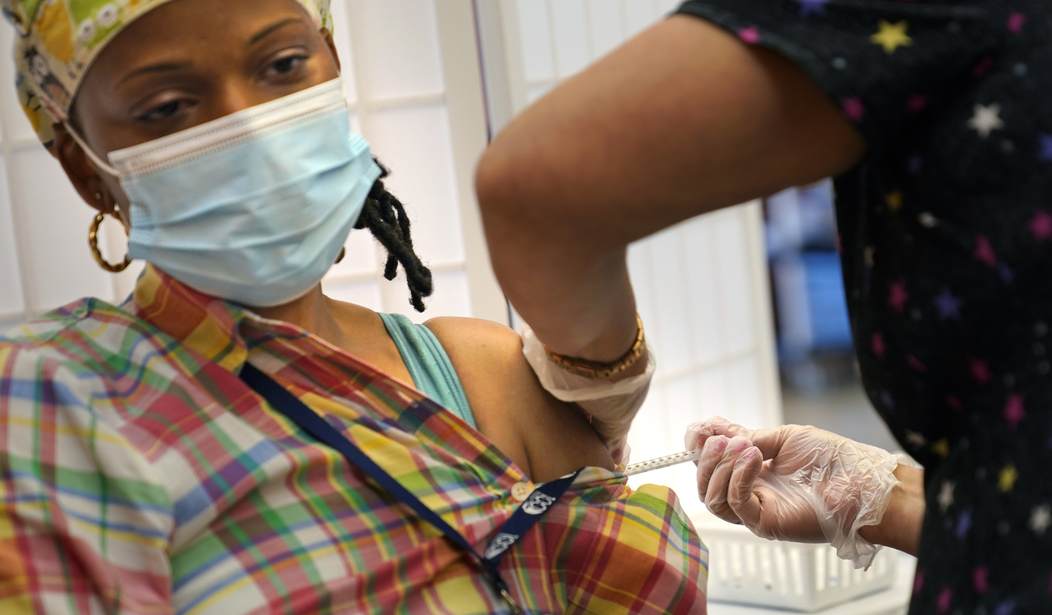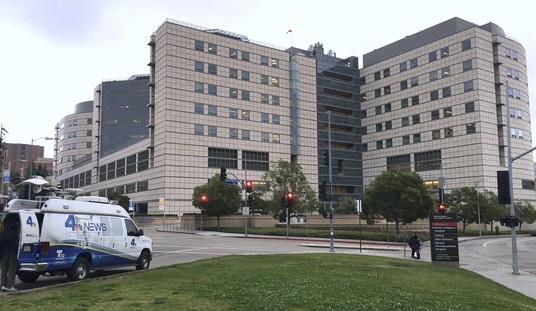Or is it a cross between COVID and HIV?
I shouldn’t say “a cross,” as that’s overstating what happened here. Researchers in Massachusetts looked at the new variant’s genome and found a weird quirk. It contains a tiny bit of genetic code that hasn’t appeared in any previous variant of SARS-CoV-2 but does appear in other coronaviruses, including one associated with the common cold. How did that happen?
Their theory is that the coronavirus that causes COVID and some other virus were present and replicating in patient zero at the same time. Remember the (very) old Reese’s commercial, “you got your chocolate in my peanut butter”? A little bit of chocolate from the second virus may have gotten into SARS-CoV-2’s peanut butter through an accident of recombination. Think of it as a viral “Brundlefly.”
If it weren’t for 1970s and 1980s pop culture, I wouldn’t be able to conceptualize pandemic science at all.
They say this particular mutation could have occurred in a host simultaneously infected by SARS-CoV-2, also known as the novel coronavirus, and the HCoV-229E coronavirus, which can cause the common cold. The shared genetic code with HCoV-229E has not been detected in other novel coronavirus variants, the scientists said…
The “striking” similarity between omicron and HCoV-229E could have made the former “more accustomed to human hosts” and likely to evade some immune system responses, said Venky Soundararajan, a biological engineer who co-wrote the study.
“By virtue of omicron adopting this insertion … it is essentially taking a leaf out of the seasonal coronaviruses’ page, which [explains] … how it lives and transmits more efficiently with human beings,” he said.
The leading theory for how Omicron arose is that an immunocompromised person got infected with a previous variant and couldn’t muster enough of an immune response to clear the virus quickly the way a healthy person would. It sat in their system, replicating — and mutating — for much longer than it would in the average joe, eventually producing a spike protein distinct from the original coronavirus’s spike. If that’s true, logically that person would also have had trouble clearing other less dangerous viruses they may have been infected with at the same time. SARS-CoV-2 and HCoV-229E might have been roommates inside patient zero for months, eventually exchanging a bit of DNA while each was busy reproducing in proximity to the other.
The oddball genetic sequence found in Omicron isn’t unique to HCoV-229E, though. It also shows up in HIV, among other viruses. Reuters notes that South Africa has the world’s highest rate of HIV. Maybe someone who was immunocompromised by that virus was later infected with Delta and ultimately produced Omicron following a long period of mutation and recombination “crossover” with bits of the HIV genome.
The news here isn’t necessarily bad, though. The researchers behind the study speculate that while the genetic sequence found in the common cold virus might make Omicron more transmissible, it might also make it less virulent, producing mostly mild or asymptomatic illness. Doctors in South Africa who’ve treated Omicron patients say they *are* seeing mild symptoms by and large so far, something experts had speculated might be due to the fact that patients to date have trended younger. But maybe the mildness of Omicron isn’t an artifact of current patients’ age. Maybe it’s something inherent in the variant itself due to the oddball genetic snippets it acquired from the other virus.
Read this report on what doctors are seeing at one hospital in Gauteng province, the epicenter of South Africa’s Omicron outbreak. Fewer patients have needed supplemental oxygen than in previous waves of COVID. They’re staying at the hospital for less time than they did during previous outbreaks too. In fact, most patients who are testing positive for COVID aren’t at the hospital because of COVID symptoms. They’re there for other health problems and are discovering that they have COVID after they’re tested as a condition of admission.
While we still need more data, see here stating that most patients contributing to the hospitalized numbers were hospitalized for another reason and found to be SARS-CoV-2 upon admission screen. H/T: @emilybethwong pic.twitter.com/786uPqHCOb
— Chise 🧬🧫🦠💉🔜 MFF (@sailorrooscout) December 4, 2021
During previous waves, said the doctor who wrote the report, the majority of COVID patients at his hospital needed oxygen. Only after they had overcome the disease and were preparing to be discharged were they taken off of it and returned to breathing room air. With Omicron, it’s the other way around. And it’s not just at his hospital where that’s happening: “On 3 December Helen Joseph Hospital had 37 patients in the COVID wards of whom 31 were on room air (83%); and the Dr George Mukhari Academic Hospital had 80 patients of which 14 were on supplemental oxygen and 1 on a ventilator (81% on room air).”
There’s also circumstantial evidence that the vaccines are providing some protection against the variant. At the hospital in Gauteng, 80 percent of patients admitted for COVID over the past two weeks were under the age of 50. Maybe that’s a quirk of the sub-populations in which Omicron has been circulating so far; we’re still in the early days of this, after all. But it’s possible that hospitals are seeing fewer older patients because older people are more likely to be vaccinated and they’re just not getting very sick when they’re infected with the variant. According to the doctor who wrote the Gauteng report, 57 percent of locals aged 50 or older have been vaccinated versus 34 percent of younger adults.
Of the 38 patients in the hospital’s COVID ward on Thursday, only one who was vaccinated required supplemental oxygen. And that person needed it for another health reason, not because he had COVID-induced pneumonia. We might not need updated Omicron-specific vaccines after all.
I hope we won’t, anyway, and not just because it’d be an enormous national headache amid hyper-politicization of vaccines to ask 215 million American adults to go out and get another shot this spring. Apparently there’s no guarantee that an updated vaccine will work as well as the first vaccines did. “[T]here is this phenomenon that’s sometimes called ‘original antigenic sin,’ which means it’s not easy to shift over the immune response to something that’s similar but not quite the same,” explained Dr. Peter Hotez to New York magazine. “It’s not a slam dunk. You can’t just assume, ‘Yeah, no worries, we’ll just make an Omicron-specific booster.’ It’s not hard to make, but we don’t know for certain that it’s going to work.” We may be on our own in fighting off Omicron. But if the early data in Gauteng holds up, that might not be so daunting.








Join the conversation as a VIP Member